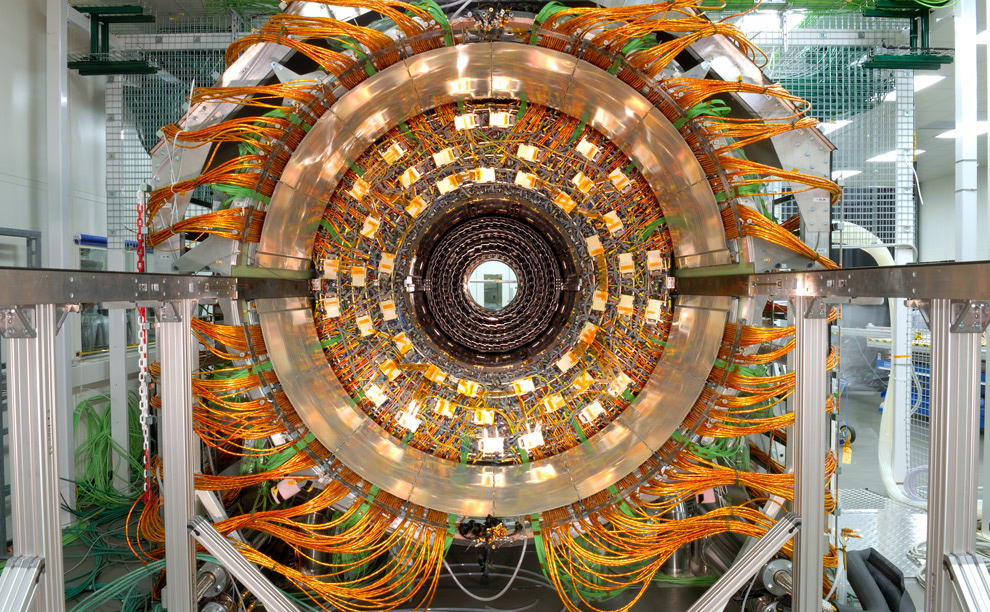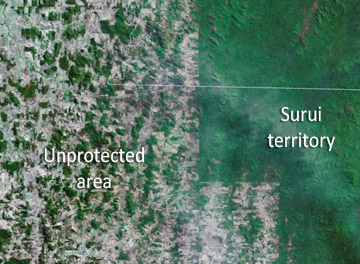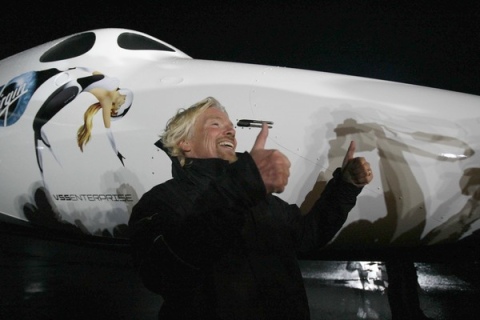
Dmitry Orlov: Please Change the Climate. Thanks.
1. The UEA emails were stolen. Data theft is a criminal activity. Use of stolen data is a criminal activity as well. People who get paid for publishing articles that are based on stolen data are dealing in stolen goods. This is no different from selling a house that you built using stolen materials.
2. Smearing someone's reputation based on lies is called libel. To defend oneself against the charge of libel, one generally has to present evidence to prove that one's statements are in fact true. Stolen data is not admissible as evidence. …
Nature: Climatologists under pressure
Stolen e-mails have revealed no scientific conspiracy, but do highlight ways in which climate researchers could be better supported in the face of public scrutiny.
The e-mail archives stolen last month from the Climatic Research Unit at the University of East Anglia (UEA), UK, have been greeted by the climate-change-denialist fringe as a propaganda windfall (see page 551). To these denialists, the scientists' scathing remarks about certain controversial palaeoclimate reconstructions qualify as the proverbial 'smoking gun': proof that mainstream climate researchers have systematically conspired to suppress evidence contradicting their doctrine that humans are warming the globe.
This paranoid interpretation would be laughable were it not for the fact that obstructionist politicians in the US Senate will probably use it next year as an excuse to stiffen their opposition to the country's much needed climate bill. Nothing in the e-mails undermines the scientific case that global warming is real — or that human activities are almost certainly the cause. That case is supported by multiple, robust lines of evidence, including several that are completely independent of the climate reconstructions debated in the e-mails. …
Mike Hulme: The Science and Politics of Climate Change
I am a climate scientist who worked in the Climatic Research Unit (CRU) at the University of East Anglia in the 1990s. I have been reflecting on the bigger lessons to be learned from the stolen emails, some of which were mine. One thing the episode has made clear is that it has become difficult to disentangle political arguments about climate policies from scientific arguments about the evidence for man-made climate change and the confidence placed in predictions of future change. The quality of both political debate and scientific practice suffers as a consequence. …
Peter Kelemen: What East Anglia's E-mails Really Tell Us About Climate Change
In the past two weeks, scientists like myself have been gripped by news of the theft and online release of more than a decade of e-mails from one of the world's leading centers for climate-change research, the Hadley Climatic Research Unit (CRU) at Britain's University of East Anglia. During these same weeks, world political leaders have been preparing for a climate summit in Copenhagen and a new study has indicated that a major ice sheet in eastern Antarctica, previously thought to be stable, is in fact losing mass. But those developments have been clouded by the stolen e-mails and what they may imply about how research into human-induced global warming is carried out. …
Bob Ward: Climate change denial is the new article of faith for the far right
It is now 12 days since the hacked emails from the Climatic Research Unit at the University of East Anglia first appeared online, and the propaganda machine for the climate change denial lobby is in overdrive.
The University of East Anglia has rightly announced an independent investigation into the hacking episode. It is essential that the investigation examines, thoroughly and transparently, the substance of the email messages and establishes whether there has been any wrongdoing. From what I have seen, there is no evidence of research misconduct, but the only way to clear the air now is through an investigation.
Some people have already, and predictably, taken on the role of judge, jury and executioner, and have called for Phil Jones, the director of the unit, to resign. Yesterday Jones announced he would be temporarily standing down while an inquiry is carried out. But such a hysterical witch hunt is a sign of desperation rather than justice.
Despite nearly two weeks of frantic brandishing of the "smoking gun", there is still no evidence of the alleged bullets that would constitute an overturning of 200 years of climate research. The greenhouse effect still exists and the Earth is still warming. …
Ben Jervey: The Ministry of Climate Change Misinformation
I really didn't want to write anything about the stolen climate scientist emails. Besides the fact that the personal accounts of scientists in the Climatic Research Unit at the University of East Anglia were illegally hacked, the supposedly incriminating quotes were taken well out of context, and, frankly, the actual content of the correspondences contains nothing to suggest that climate change isn't very real and a very immediate threat. The emails certainly don't change the fact that the scientific consensus on anthropogenic climate change remains strong.
Not that the scientific consensus seems to matter in this day and age of misinformation.
But these emails reared their ugly heads the same week that I happened to be reading a new book on the long-running "crusade to deny global warming," an exposé of the intricate and highly orchestrated efforts of fossil fuel companies (and the politicians, mad men, and reactionary media flacks in their back pockets) to discredit real climate science and manufacture confusion. Climate Cover-Up grew out of the good, old-fashioned muckracking that James Hoggan (with co-author Richard Littlemore) has been publishing since 2005 on the invaluable website DeSmogBlog. The book, through meticulously documented analysis, lays out the deliberate, nefarious, and immoral campaign to manipulate the public discourse on climate change. It also helps explain why, despite the well-established science, there are still ads on TV trumpeting the benefits of carbon dioxide ("They call it pollution, We call it life"), why anonymous commenters continue to bombard climate-related articles and blog posts (and, likely, this column) with uninformed "it's a hoax" or "the world is cooling" denial talking points, why just over half of registered Republicans believe climate change is happening at all, and why, last week, some stolen personal emails from climate scientists that don't actually discredit their work is a bigger news story than the very severe, enormously dire findings released by the scientifically sound Copenhagen Diagnosis. …
Ben Santer: Dear colleagues and friends
I am sure that by now, all of you are aware of the hacking incident which recently took place at the University of East Anglia's Climatic Research Unit (CRU). This was a criminal act. Over 3,000 emails and documents were stolen. The identity of the hacker or hackers is still unknown.
The emails represented private correspondence between CRU scientists and scientists at climate research centers around the world. Dozens of the stolen emails are from over a decade of my own personal correspondence with Professor Phil Jones, the Director of CRU.
I obtained my Ph.D. at the Climatic Research Unit. I went to CRU in 1983 because it was - and remains - one of the world's premier institutions for studying the nature and causes of climate change. During the course of my Ph.D., I was privileged to work together with exceptional scientists – with people like Tom Wigley, Phil Jones, Keith Briffa, and Sarah Raper. …
An Open Letter to Scientists from Kevin Trenberth
…This has been a difficult time for us, with very personal abusive and threatening emails, protesters at the bottom of the NCAR (National Center for Atmospheric Research) hill, and trying to get a decent hearing. I am proud of what Phil and I did for Chapter 3 in AR4, and it is disappointing that the IPCC has not been more forthright in standing up for its procedures.
After the SAR, when editors were introduced, the IPCC process has become very open, transparent and thorough, but it is not documented anywhere that we can hold up to the world and say, "look, see". The IPCC web site is not helpful. It is possible to find something on IPCC procedures and the URL is in the attached. However, the attached is my attempt to detail the process of which we should be proud. In particular it documents the process down to the level of Chapter 3 of AR4. Along with the huge xls spread sheets that document how every comment (for chapter 3 over 3500) were handled and responded to (now why aren't those made publicly available???) the process does not allow any of the finagling or manipulation we have been accused of.
Indeed in the stolen emails you will find evidence of this. Please promote the attached document and maybe we can get it onto the IPCC web site somehow? And maybe we can get others to pay attention to it. …
Phil Jones gets the last word
Our global temperature series tallies with those of other, completely independent, groups of scientists working for NASA and the National Climate Data Centre in the United States, among others. Even if you were to ignore our findings, theirs show the same results. The facts speak for themselves; there is no need for anyone to manipulate them.
by Philip Bump | 10:46 am, December 29th, 2009































